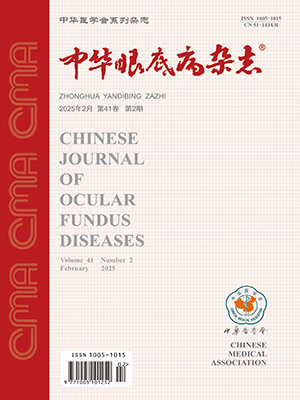| 1. |
Tibrewal S, Subhedar K, Sen P, et alClinical spectrum of non-syndromic microphthalmos, anophthalmos and coloboma in the paediatric population: a multicentric study from North India[J]. Br J Ophthalmol20211057897903. DOI:10.1136/bjophthalmol-2020-316910.
|
| 2. |
Harding P, Moosajee MThe molecular basis of human anophthalmia and microphthalmia[J]. J Dev Biol20197316. DOI:10.3390/jdb7030016.
|
| 3. |
Williamson KA, Rainger J, Floyd JA, et al. Heterozygous loss-of-function mutations in YAP1 cause both isolated and syndromic optic fissure closure defects[J]. Am J Hum Genet2014942295302. DOI:10.1016/j.ajhg.2014.01.001.
|
| 4. |
Richards S, Aziz N, Bale S, et alACMG Laboratory Quality Assurance Committee. Standards and guidelines for the interpretation of sequence variants: a joint consensus recommendation of the American College of Medical Genetics and Genomics and the Association for Molecular Pathology[J]. Genet Med2015175405424. DOI:10.1038/gim.2015.30.
|
| 5. |
Basu-Roy U, Bayin NS, Rattanakorn K, et alSox2 antagonizes the Hippo pathway to maintain stemness in cancer cells[J]. Nat Commun201566411. DOI:10.1038/ncomms7411.
|
| 6. |
Hauri S, Wepf A, van Drogen A, et alInteraction proteome of human Hippo signaling: modular control of the co-activator YAP1[J]. Mol Syst Biol20139713. DOI:10.1002/msb.201304750.
|
| 7. |
Miesfeld JB, Gestri G, Clark BS, et alYap and Taz regulate retinal pigment epithelial cell fate[J]. Development20151421730213032. DOI:10.1242/dev.119008.
|
| 8. |
Seo E, Basu-Roy U, Gunaratne PH, et alSOX2 regulates YAP1 to maintain stemness and determine cell fate in the osteo-adipo lineage[J]. Cell Rep20133620752087. DOI:10.1016/j.celrep.2013.05.029.
|
| 9. |
Oatts JT, Hull S, Michaelides M, et al. Novel heterozygous mutation in YAP1 in a family with isolated ocular colobomas[J]. Ophthalmic Genet2017383281283. DOI:10.1080/13816810.2016.1188122.
|
| 10. |
Holt R, Ceroni F, Bax DA, et al. New variant and expression studies provide further insight into the genotype-phenotype correlation in YAP1-related developmental eye disorders[J]. Sci Rep2017717975. DOI:10.1038/s41598-017-08397-w.
|
| 11. |
Fossdal R, Jonasson F, Kristjansdottir GT, et alA novel TEAD1 mutation is the causative allele in Sveinsson's chorioretinal atrophy (helicoid peripapillary chorioretinal degeneration)[J]. Hum Mol Genet2004139975981. DOI:10.1093/hmg/ddh106.
|
| 12. |
Williamson KA, FitzPatrick DRThe genetic architecture of microphthalmia, anophthalmia and coloboma[J]. Eur J Med Genet2014578369380. DOI:10.1016/j.ejmg.2014.05.002.
|
| 13. |
Lima Cunha D, Arno G, Corton M, et alThe spectrum of PAX6 mutations and genotype-phenotype correlations in the eye[J]. Genes (Basel)201910121050. DOI:10.3390/genes10121050.
|
| 14. |
李杰, 栗占荣, 邢亚斯, 等先天性无虹膜患者的基因型-表型分析[J]. 中华实验眼科杂志20193711896900. DOI:10.3760/cma.j.issn.2095-0160.2019.11.009..Li J, Li ZR, Xing YS, et alGenetic screening of the congenital aniridia and genotype-phenotype analysis[J]. Chin J Exp Ophthalmol20193711896900. DOI:10.3760/cma.j.issn.2095-0160.2019.11.009.
|
| 15. |
Morrison D, FitzPatrick D, Hanson I, et alNational study of microphthalmia, anophthalmia, and coloboma (MAC) in Scotland: investigation of genetic aetiology[J]. J Med Genet20023911622. DOI:10.1136/jmg.39.1.16.
|
| 16. |
Kumar K, Tanwar M, Naithani P, et alPAX6 gene analysis in irido-fundal coloboma[J]. Mol Vis20111714141419.
|
| 17. |
Ohuchi H, Sato K, Habuta M, et alCongenital eye anomalies: more mosaic than thought? [J]. Congenit Anom (Kyoto)20195935673. DOI:10.1111/cga.12304.
|
| 18. |
Hotta K, Hirakata A, Hida TRetinoschisis associated with disc coloboma[J]. Br J Ophthalmol1999831124. DOI:10.1136/bjo.83.1.123b.
|
| 19. |
Roy R, Waanbah AD, Mathur G, et alOptical coherence tomography characteristics in eyes with optic pit maculopathy[J]. Retina2013334771775. DOI:10.1097/IAE.0b013e31826f5234.
|
| 20. |
Lingam G, Sen AC, Lingam V, et alOcular coloboma-a comprehensive review for the clinician[J]. Eye (Lond)202135820862109. DOI:10.1038/s41433-021-01501-5.
|




